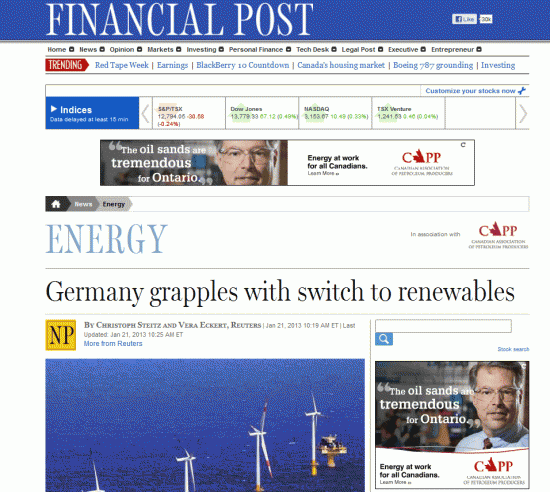Energy is a foundation of modern life and one of the key differentiators between healthy, wealthy societies and sick, poor ones. As populations grow and countries develop, the best option in meeting their rising energy demand lies in energy efficiency – getting the same for less energy or getting more from the same.
— IEA Energy: The Journal of the International Energy Agency

Sun Ship, Freiburg, Germany (photo by Osha Gray Davidson)
Energy efficiency can never replace the need for a shift to renewable and clean sources of energy. But it can help make the change much more manageable — economically, technologically, and politically — by reducing the amount of primary power needed.
Last year, while researching Germany’s renewable energy transition, I visited several extremely efficient buildings, like the Sun Ship (pictured above) in Freiburg, designed by Rolf Disch, a pioneer in “PlusEnergy” buildings, and the Reichstag, Germany’s parliament in Berlin, rebuilt to exacting energy standards by English architect, Sir Norman Foster. (My slideshow of these and other buildings is here.)
The article excerpted here is from a forthcoming issue of the Journal of the International Energy Agency. It’s an excellent brief overview of the arguments for energy efficiency and worth reading in full (follow the link at the end of the excerpt to see the entire article).
Megawatts vs. Negawatts
For the one in five people in the world who currently lack electricity in their homes and businesses, available and affordable energy resources are critical to their community’s efforts to reduce poverty, improve public health and increase educational opportunities.
For those with energy access, supply security – ensuring that energy is consistently available and affordable – is an ongoing challenge.
The European Fuel Poverty and Energy Efficiency Project estimates that up to 125 million Europeans are fuel-poor, having to make the “eat or heat” decision during winter months. In Belgium, where nuclear power provides more than half of the electricity supplied, the country’s power system came under significant strain late last year when safety concerns led to a months-long reactor shutdown. The American Society of Civil Engineers projects a USD 500 billion investment deficit for the ageing power grid in the United States, which increases energy reliability concerns.
But “negawatts” could reduce the pressure on supply infrastructure while maintaining adequate energy services for an improving quality of life. The negawatt is a theoretical unit of power saved – its name stems from a newspaper typo that Amory Lovins, the founder of the Rocky Mountain Institute and a dedicated energy efficiency supporter, decided to adopt for a 1989 keynote address at the Green Energy Conference in Montreal. There, he painted a picture of a more energy-efficient world, saying, “Imagine being able to save half the electricity for free and still get the same or better services!”
via IEA - February:- Megawatts vs “negawatts”: when less is more.

